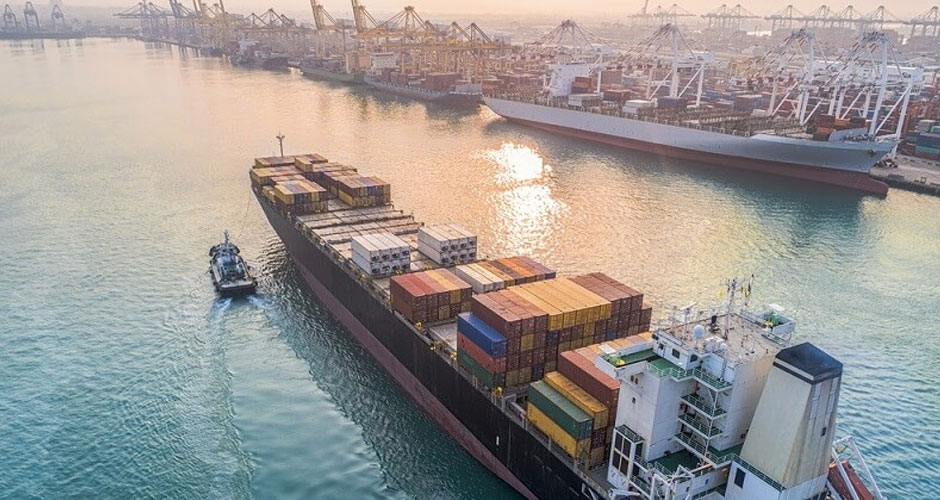Tips To Reduce Freight Forwarding Costs For Your Company

Are you looking for ideas on freight cost reduction to learn how to save money on transportation logistics? If freight is an important component of your business, you will continue to confront rising costs across your transportation chain. In addition to the normal price increases in the fuel and machinery markets, suppliers confront a variety of financial constraints. Reduced transportation logistics costs have always been a top objective for businesses. There are numerous ways for firms to reduce transportation expenses, enhance supply chain operations, and save money.
Streamlining inventory levels, updating smarter transportation networks, offering better processes, and strengthening connections between suppliers and third parties are all examples of strategies for lowering logistical costs.
Treating your customers properly and listening to them is a critical component in lowering logistical costs. Profit will follow. We’ve put up this list of 8 Practical Ways to Cut Transportation Logistics Costs to assist you to come up with even more innovative ideas:
1. Think Outside the Box – Don’t Limit Yourself to Single Modes
Increasing your flexibility and adaptability in your transportation options might help you overcome losses in ways you may not have considered. Sea freight is generally significantly less expensive than air freight. However, the time it would take might lose you sales in the long run.
Examine the expenses of various forms of transportation, but don’t be afraid to switch if required. If you normally rely on single modes, intermodal transportation would be another alternative accessible to you that you may not have explored previously.
Although rail transport is less expensive than trucks, a unique mix of the two may be the key to keeping on schedule and on budget. Reducing your utilization of more expensive delivery alternatives is another method to aid with the mode’s flexibility.
If your customer simply needs a portion of what you ship as soon as possible, you will most likely expedite the entire cargo. However, you may save money by expediting only the freight that has to get there soon and using less expensive routes for the rest of the cargo.
2. Investigate the Possibilities of Shipping Consolidation
For lesser weights, less-than-truckload (LTL) shipping is a cost-effective choice. You may save money by consolidating big shipments of diverse items or shipments for all buyers into one shipment by employing full load shipping (FTL).
3. Take into account warehousing services.
If you’re transporting a large number of items from point A to point B, especially over a long distance, you may keep things closer to your consumers and save money on transportation.
First and foremost, you must comprehend the security concerns. Make sure your warehouse’s operations are secure by being proactive. Make every effort to prevent costly injuries. Avoid government fines as much as possible.
If you have a number of security issues, the authorities may decide to shut down your business. Appoint a safety manager to be responsible for safety and to coordinate continuing safety training.
4. Reduce labour costs by using an automatic container loading system.
Using our Automatic container loading system is one of the greatest methods to save labour expenses, minimise product damage, save production costs, and yet be more productive.
Analyze how much labour may be saved in every warehouse operation. The labour expenses should be the focus of any project. Warehouse work may be managed with the aid of labour management software solutions.
Creating reward programmes for warehouse staff is also a good idea. In your four walls, try mobility in the warehouse. Overhead has been minimised. And as a result, overall individual productivity rises; fewer people and resources are required.
5. Preventive Maintenance should be used.
Preventive maintenance is used to minimise logistical costs on just about any piece of equipment – emergency or breakdown maintenance don’t work. It may be costly in terms of labour hours, customer service, and deadly accidents (safety): the container is being unloaded when the forklift breaks down.
6. Reduce Logistics Costs as a Priority
The simplest logistical cost-cutting supply-chain advice is to collaborate with suppliers to save money. Suppliers may be able to offset some direct logistical expenses. Attempt to form a buyer’s consortium (a buyer and their suppliers) to acquire the essential logistical supplies (i.e., transportation fuel) at a reduced cost by purchasing in bulk.
Begin inviting suppliers to your facilities with a defined agenda. Analyze your items and provide logistical cost-cutting suggestions as one subject. The provider is likely to be an expert in their industry.
Suppliers may undoubtedly assist by continuing to collaborate with you on a win-win cost-cutting strategy. Maintaining a part’s function while dramatically reducing component prices without jeopardising quality is always a good idea.
7. Maintain Customer Satisfaction
Customers must be satisfied in order to keep logistical support expenses per order as low as possible (and this Fast-Track customer retention customers). Exceeding customer expectations is one of the most successful supply chain cost-cutting strategies; firms can stay up and efficiently handle the tremendous load of lowering transportation costs.
Because of the strong link between customer happiness and total cost reduction, customer service should be evaluated for changes in logistical costs as well.
8. Increase the storage density by making better use of available storage space.
Distinguish between spaces and attempt to remove them. By making better use of vertical space, it is always possible to enhance storage density in bins and racks. Reduces the risk of damage to shipping containers by preventing movement during shipment.
To enhance storage density, try to make greater use of existing storage space. Make an effort to support organised activities that are closely connected to labour, efficiency, asset utilisation, and inventory correctness.



Leave us a comment